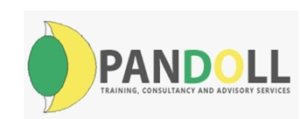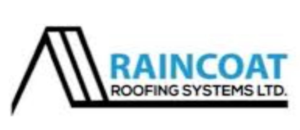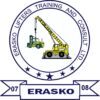

Each year, more than 270 000 pedestrians lose their lives on the world’s roads. Many leave their homes as they would on any given day never to return. Globally, pedestrians constitute 22% of all road traffic fatalities, and in some countries this proportion is as high as two thirds of all road traffic deaths. Millions of pedestrians are non-fatally injured, some of whom are left with permanent disabilities. These incidents cause much suffering and grief as well as economic hardship.
The capacity to respond to pedestrian safety is an important component of efforts to prevent road traffic injuries. Pedestrian collisions, like other road traffic crashes, should not be accepted as inevitable because they are both predictable and preventable. The key risks to pedestrians are well documented, and they include issues related to a broad range of factors: driver behaviour particularly in terms of speeding and drinking and driving; infrastructure in terms of a lack of dedicated facilities for pedestrians such as sidewalks, raised crosswalks and medians; and vehicle design in terms of solid vehicle fronts which are not forgiving to pedestrians should they be struck. Poor trauma care services in many countries also thwart efforts to provide the urgent treatment needed to save pedestrian lives.
This training equips the candidate with necessary information on: the magnitude of pedestrian death and injury; key risk factors; how to assess the pedestrian safety situation in a country or area and prepare an action plan; and how to select, design, implement and evaluate effective interventions. The presentation stresses the importance of a comprehensive, holistic approach that includes enforcement, engineering and education. It also draws attention to the benefits of walking, which should be promoted as an important mode of transport given its potential to improve health and preserve the environment.
The training, which is designed for a multidisciplinary audience including businessmen, planners, public health professionals and educators, will contribute towards strengthening national and local capacity to implement pedestrian safety measures in settings worldwide.
Make Yourself Visible Around Fork Trucks
Safety begins with awareness
You’ve heard it before, “Boy, that was a near miss!” But when you’re around forklifts, you should be thinking, “Boy, that was a near fatality!” because the danger of working around forklifts is so high risk. Reduce that risk by making yourself visible to forklift drivers anytime you’re working within their travel zone.
A few things to know about forklifts
Forklifts weren’t originally designed to transport loads, only to lift and lower them. For this reason, forklifts traditionally have very limited fields of clear vision. Most of the time, a driver’s field of vision is obstructed by the mast structure of the lift, by the load itself, or by dusty, or misty driving conditions. Additionally, drivers are often focused on load stability and making sure it arrives in one piece.
So it’s your job to make yourself visible to drivers.
How to be more visible
Follow basic rules of engagement and be aware of the driver’s visual limitations.
Make eye-to-eye contact with the forklift driver before proceeding into his traffic path. Confirm the driver sees you by waiting until he acknowledges your eye contact in some way. Once you receive that acknowledgment, try to stay within the driver’s field of vision until you are clear of his path. That means crossing far enough in front of him that you aren’t hidden from his view by the fork mechanism or the load. He needs to know you have cleared his path before he can safely proceed.
Understand equipment limitations by knowing that forklifts have long stopping distances because of their weight and size. They also have limited maneuverability when driven in reverse, due mainly to the position the driver must operate from when in reverse. Also be aware of vision limitations due to the size of the load, the position of the lift mechanism, the mast thickness, and how clean the windscreen is.
- Understand that turning forklifts present special dangers due to the wide arc the outer edge of the load travels in and the speed that edge travels at. Forklifts do not turn like cars. The turning radius is much sharper and parts of the forklift will just outside the turning arc as the forklift moves. Forklifts may not be equipped with horns to warn they are approaching an intersection, and backup beepers may not be operable.
- Never assume a driver can see you. Stay in marked pedestrian lanes and crosswalks to prevent being hit by a forklift. Obey traffic signals such as traffic lights or motion detector systems. Check the view in wide angle mirrors mounted at aisle ends and blind corners to see oncoming traffic. Adhere to pedestrian safety gate usage – never take shortcuts or climb through guard rails.
- Yield the right of way unless you are sure the driver has seen you and stopped the forklift so you can cross. Remember that even if the fork lift manages to stop, his load may not. Keep a safe distance from any forklift and expect one to appear anytime you approach a blind intersection. Stop, look and listen before proceeding.
- Wear high visibility clothing to make it easier for the forklift driver to see you. Reflective strips or brightly colored clothing makes you stand out from the background, especially in low light. Always wear a hard hat when working in lift and load zones. Loads can become unbalanced and fall unexpectedly.
By following each of these common sense rules, you will make yourself more visible to forklift drivers and avoid becoming a “near-fatality”.
Drivers and pedestrians must be aware of their surroundings

Does your company have clear rules regarding personal communication devices, food, and drink when it comes to forklift safety? If not, then you, as a forklift driver, should set personal standards. Driver distractions lead to thousands of serious forklift accidents every year, sometimes even resulting in fatalities
It is all too easy to mentally check-out when driving a forklift.
You get busy re-hashing that fight with your spouse, thinking about the vacation you’ve planned or playing that great guitar riff over and over in your mind, and the next thing you know, you’ve driven through a blind intersection and find another forklift coming right at you.
Had you been alert and aware, you would have noticed the sound of an oncoming forklift as he stopped to sound his horn before entering the intersection. You would have stopped and sounded your horn as well, but no, not this time because you were distracted with personal business.
 Cell phones, MP3 players and other personal devices also contribute to driver distraction. Drivers are more focused on the personal device than on their driving. Answering phones, texting messages, tuning to favorite songs all distract you from your primary function: safely operating a piece of dangerous equipment.
Cell phones, MP3 players and other personal devices also contribute to driver distraction. Drivers are more focused on the personal device than on their driving. Answering phones, texting messages, tuning to favorite songs all distract you from your primary function: safely operating a piece of dangerous equipment.
Having food and beverages on the forklift with you leads to a casual operating attitude as you rationalize that taking a quick sip of soda won’t hurt anything. But while you’re reaching for that drink, a pedestrian comes out of nowhere, and you’re not prepared for an emergency stop. Your reaction time is reduced because you must first come back to reality before you can register what is happening. You slam on the brakes, but it’s too late. That simple distraction has just cost someone their life.
Never take anything on the forklift with you that might distract you from being alert and aware. Leave family troubles at home. Use defensive driving techniques to anticipate pedestrians and other traffic at blind intersections. Keep your mind in the here and now.
Benefit from paying attention to safety equipment like guard rail, traffic motion sensor systems and traffic lights in the work place. Slow to a stop when pedestrian safety gates are in operation. Stay certified as a driver and take new training each time it’s available. By following these guidelines, you will have a great safety record and save yourself years of regret in the long run.
But, I’m No Forklift Driver!
The burden of risk is on you if you’re afoot near forklift operations
Just because you don’t drive a forklift, it doesn’t mean you don’t need to know about forklift safety – in fact, if you are a pedestrian in a warehouse, factory, or lumber yard where forklifts are present, you should be more aware of the dangers than the drivers. You’re the one at risk. You can take steps to safeguard yourself and those working around you when forklifts are in your area, or when you are in the forklift’s area.
Make yourself visible to the driver

First and foremost, when a forklift comes near, make sure the driver sees you. Make eye contact with the driver and be sure he acknowledges your presence. Remove mirrored or tinted safety glasses so the driver can see your eyes and know you have seen him.
If a forklift is stationary but the driver is in the seat and the engine is running, make sure to let the driver know you are there. He may suddenly begin moving and you could become pinned between the forklift and another object.
Always approach a forklift from the side and only after it has come to a complete stop. The front and rear areas of a forklift are the most dangerous to approach from – ALWAYS approach from the side.
Obey traffic rules
Always obey traffic safety devices such as motion sensor alarms and pedestrian safety gates. These devices make sure both you and the forklift driver are aware of oncoming traffic. No matter who enters an intersection first, it’s your job to yield the right-of-way to any forklift approaching unless a safety gate has dropped its boom arm and opened the crosswalk in your direction.
Stop, look both ways, and listen before entering an aisle, going around a blind corner or entering a forklift traffic lane from an office or other doorway. Be especially careful when entering between racks, from between stacks of product or other items where a driver will not see you until you’re already in his path. Be aware of blind spots where you and a forklift driver cannot see each other.
Never climb over guard rails to cross a forklift traffic zone. The guard rails are there to protect both you and drivers from a devastating collision. Only enter forklift traffic zones at marked crosswalks.
Keep workers and work zones safe
To help forklift drivers safely move through a facility, keep aisles clear of obstructions. Remove any hazards such as pallet stacks that obstruct travel paths or visibility. Keep spills cleaned up to reduce possible skidding or loss of steering control.
Keep a safe distance from a loading or unloading forklift. Loads are especially unstable during the loading/unloading process. Staying at least ten (10) feet clear assures you won’t be hit or crushed if the load should fall.
NEVER walk under raised forks or pass in front of a forklift with raised forks – whether loaded or empty. Don’t work below loads on raised forks. It’s all too easy for the forklift to lose pressure and the forks lower before you can get out of the way.
Forklifts are not intended to carry people unless that person is sitting in the driver’s seat. Never allow someone to get a ride by hopping onto the frame, forks or body of a forklift.
Forklifts are not to be used as people lifts. Falls from raised pallets or forks should never happen. Don’t be one of the statistics.
Lastly, remember that just like you have a responsibility to report unsafe forklift drivers, they are required to report unsafe pedestrian behavior. No, you may not be a forklift driver, but if you want to stay safe, you need to know forklift safety as if you were one.
Client Portfolio
Erasko Lifters and Training Consult Limited has been dedicated to and involved in industrial, warehousing, and manufacturing equipment training since 2008, which accounts for its partnerships with institutions here in Ghana. Below are some of the companies we have worked with so far.











